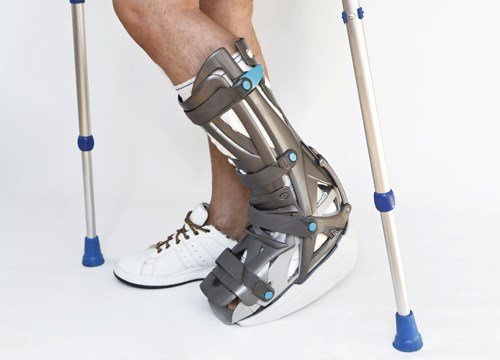How Do Orthotics And Prosthetics Help

In Preventing The Problem Of Feet?Orthotics and prosthetics are the medical term used for artificial or synthetic body parts such as the foot, ankle, hip and knee. In fact there are three types of orthotics: general orthotics, special purpose orthotics and prosthetics. General orthotics are those designed to treat the feet and ankles and can be either over the counter or prescribed by the physician. Special purpose orthotics and prosthetics are meant to provide additional support and mobility to the body part.
Special purpose orthotics include braces, diabetic shoes, toe supports, knee braces, splints for the hip and ankle and other foot supports. It is very important to note that all these orthotics and prosthetics need proper care and maintenance in order to ensure their effective functioning.
Most of the time, it is not possible to maintain the appropriate care and maintenance of a foot or ankle. However, there are some special products that help in the maintenance of orthotics and prosthetics. For instance, specialised pads for the feet and ankles can be used to protect the surface of the skin against scratches and other kinds of abrasions.
The protective pads help in absorbing impact and pressure of the foot while it is in use. The prosthetic leg also help in maintaining the normal arch of the foot. Another way in which these protective pads are used is to reduce the pressure on the joints and tissues in order to help them move properly.
Special purpose orthotics, especially for the foot and ankle, are usually made of foam, plastics or neoprene. They are designed to offer adequate support to the bone and tissue of the foot. They are used mainly during times when the feet have undergone surgery and they may require more maintenance and support than regular orthotics.
All the three types of orthotics and prosthetics come in different sizes and shapes so that the individual may select the one which meets his or her needs. Generally people suffer from different kinds of problems. For instance, a person suffering from a deformity of the foot will require a different kind of orthotic and prosthetic from a person suffering from arthritis. However, people should always consult a doctor and make sure that the treatment is suitable to the particular type of foot.
There are special purpose orthotics and prosthetics available in the market for those who suffer from diabetes and other complications like arthritis. A person suffering from diabetes will need special orthotics and prosthetics in order to keep the diabetic foot in good health. Similarly, people suffering from arthritis or joint diseases like carpal tunnel syndrome will require special orthotics and prosthetics to relieve the pain and swelling associated with such problems.
However, it is very important to note that a patient should ensure proper maintenance of the foot and ankle in order to avoid any kind of infection and to avoid the problem of infections. Moreover, proper care of the foot and ankle also involves proper intake of food and proper exercise. Proper care and maintenance of the foot and ankle and foot in general will prevent orthotics and prosthetics from having too much of an effect on the person's health. You can learn more about this topic here: https://www.encyclopedia.com/sports/sports-fitness-recreation-and-leisure-magazines/orthotics.
